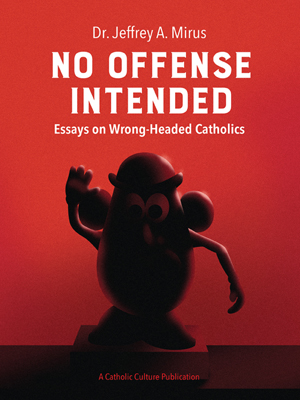Synod, October 13: Cardinal Hollerich asks participants to set aside their own thinking, listen to others
October 14, 2023
On October 13, participants in the first session of the 16th Ordinary General Assembly of the Synod of Bishops turned their attention to the third topic of conversation: “Co-responsibility in Mission: How can we better share gifts and tasks in the service of the Gospel?” (module B2).
The first topic of conversation (module A, October 4-7) was “Starting from the journey of the local Churches to which we each belong and from the contents of the Instrumentum laboris [working document], which distinctive signs of a synodal Church emerge with greater clarity and which deserve greater recognition or should be particularly highlighted or deepened?” The second topic (module B1, October 9-12) was ““A communion that radiates: How can we be more fully a sign and instrument of union with God and of the unity of all humanity?”
The final report of the Synod’s first session (October 4-29) will form the agenda of the Synod’s second session (October 2024).
Cardinal Ambongo calls for repentance, recommends ‘weapons of synodality’ to fight Satan
Cardinal Fridolin Ambongo Besungu, OFM Cap, of Kinshasa (Democratic Republic of the Congo) preached the homily at the morning Mass in St. Peter’s Basilica.
Reflecting on the first reading at Mass from the Book of the Prophet Joel, Cardinal Ambongo decried sexual abuse, abuse of power and conscience, and financial scandals.
“Coming from all continents, and united as one family, in this beauty of unity in cultural diversity, we are also invited to weep and lament before this altar, at the tomb of Saint Peter, because of our weaknesses as a Church,” he preached. “We are here to cry and ask God for forgiveness for our sins. But the best way to cry is the courage to undertake the path of repentance and conversion, which opens paths of reconciliation, healing and justice.
“The Evil One sows discord,” he continued, as he reflected on the Gospel reading (Luke 11:15-26). “This is why we must courageously fight the Evil One, using in particular the weapons of synodality, which require unity, walking together, discernment in prayer, mutual listening and to what the Spirit has to say to us.”
Cardinal Hollerich introduces Synod’s third topic
After participants gathered in Paul VI Audience Hall, Cardinal Jean-Claude Hollerich, SJ, the Synod’s relator general, introduced module B2 (“Co-responsibility in Mission: How can we better share gifts and tasks in the service of the Gospel?”).
During the discussion of module A, all of the Synod’s 35 working groups discussed the same questions. During the discussion of module B1, each working group discussed only one of the module’s five worksheets. The discussion of module B2 follows the pattern of the discussion of module B1.
“A synodal Church is a Church sent out in mission,” said Cardinal Hollerich. “The Lord’s command given to the Apostles extends to all members of our apostolic Church.”
The Internet “transforms our ways of living, of perceiving reality, and of living relations,” he continued. “Thus, it becomes a new mission territory. Just as Francis Xavier left for new lands, are we willing and prepared to sail towards this new continent?”
He continued:
We have to be guided by the people who inhabit the digital continent. Mostly we bishops are not the pioneers of this mission, but those who are learning along a path opened up by the younger members of the People of God. We will hear more about this later. In any case, this example helps us to understand why our title speaks of co-responsibility in mission: all the baptized are called and have the right to participate in the mission of the Church, all have an irreplaceable contribution to make. What is true for the digital continent is also true for other aspects of the mission of the Church.
Cardinal Hollerich then explained his concept of the Church’s mission.
“The mission of the Church is to proclaim the Gospel, starting with the kerygma,” he said. “To the mission of the Church belongs the commitment to integral ecology, the struggle for justice and peace, the preferential option for the poor and the peripheries, and the willingness to be open to encounter with all.”
The prelate called for a greater openness to the charisms of women and the non-ordained:
The baptism of women is not inferior to the baptism of men. How can we ensure that women feel they are an integral part of this missionary Church? Do we, the men, perceive the diversity and the richness of the charisms the Holy Spirit has given to women? ...
What is the relation between ordained ministry and other baptismal ministries? We all know the image of the body Saint Paul uses. Are we ready to accept that all parts of the body are important?
He added:
This is precisely the moment when each person is called upon for a moment to put aside their point of view, their own thinking, in order to pay attention to the resonances that listening to others arouses within them. It is not a prolongation of the first round, but an opportunity to open to something new, something we may never have thought of in that way. This is the gift the Spirit has in store for each of us.
Other speakers
Synod participants then heard spiritual input from Mother Maria Ignazia Angelini, OSB; theological input from Father Carlos Maria Galli, Dean of the Faculty of Theology at the Catholic University of Argentina; and testimonies from Sister Gloria Liliana Franco Echeverri, from José Manuel De Urquidi Gonzalez and Sister Xiskya Lucia Valladares Paguaga; and from Cardinal Stephen Ameyu Martin Mulla of Juba (South Sudan).
Mother Angelini’s reflection on women and mission was noteworthy because of its novel interpretation of Sacred Scripture. She said:
And so, the Church arrives in Europe, and it does so in a surprising, new form: starting from the margins, from the banks of the river, just outside a wealthy Roman city. “Women had gathered there for prayer.” Strangely, Paul was welcomed by a liturgy outside the ritual, among women, in the open air. The apostle did not start here, as was his custom, in the synagogue (one probably did not exist in Philippi, a Roman colony). He inserted himself into a “non ritual” female liturgy, breaking into it with the word of the Gospel. As on Easter morning, so too this beginning/threshold is without men.
In discussing the conversion of Lydia, St. Luke, the human author of the Acts of the Apostles, does not assert the Lydia and the other women were taking part in a liturgical celebration; he simply writes that St. Paul preached the Gospel to women who had gathered together to pray:
Setting sail therefore from Troas, we made a direct voyage to Samothrace, and the following day to Neapolis, and from there to Philippi, which is the leading city of the district of Macedonia, and a Roman colony. We remained in this city some days; and on the sabbath day we went outside the gate to the riverside, where we supposed there was a place of prayer; and we sat down and spoke to the women who had come together. One who heard us was a woman named Lydia, from the city of Thyatira, a seller of purple goods, who was a worshiper of God. The Lord opened her heart to give heed to what was said by Paul. And when she was baptized, with her household, she besought us, saying, “If you have judged me to be faithful to the Lord, come to my house and stay.” And she prevailed upon us. (Acts 16:11-15)
Earlier coverage
- Synod of Bishops publishes retreat texts
- Pope at Synod’s opening Mass: Let us walk with the Holy Spirit
- Synod, October 4: Pope emphasizes role of Holy Spirit; Cardinal Hollerich calls for ‘new insights’
- Synod, October 5: ‘Expert-facilitators’ guide discussion; final report will form agenda of 2024 Synod session
- Synod, October 6: discussion of 1st topic nears close; Vatican spokesman says participants may speak with media
- Synod, October 7-8: working groups submit first reports; leading African cardinal emphasizes listening, discernment
- Synod, October 9: participants turn to new topic; Orthodox prelate draws sharp contrast between Eastern synodality, current Synod
- Synod, October 10: participants discuss 2nd topic, elect members of key commission
- Synod, October 11: some participants call for ‘greater discernment’ of Catholic teaching on sexual morality
- Synod, October 12: participants pray for peace
For all current news, visit our News home page.
Further information:
All comments are moderated. To lighten our editing burden, only current donors are allowed to Sound Off. If you are a current donor, log in to see the comment form; otherwise please support our work, and Sound Off!







